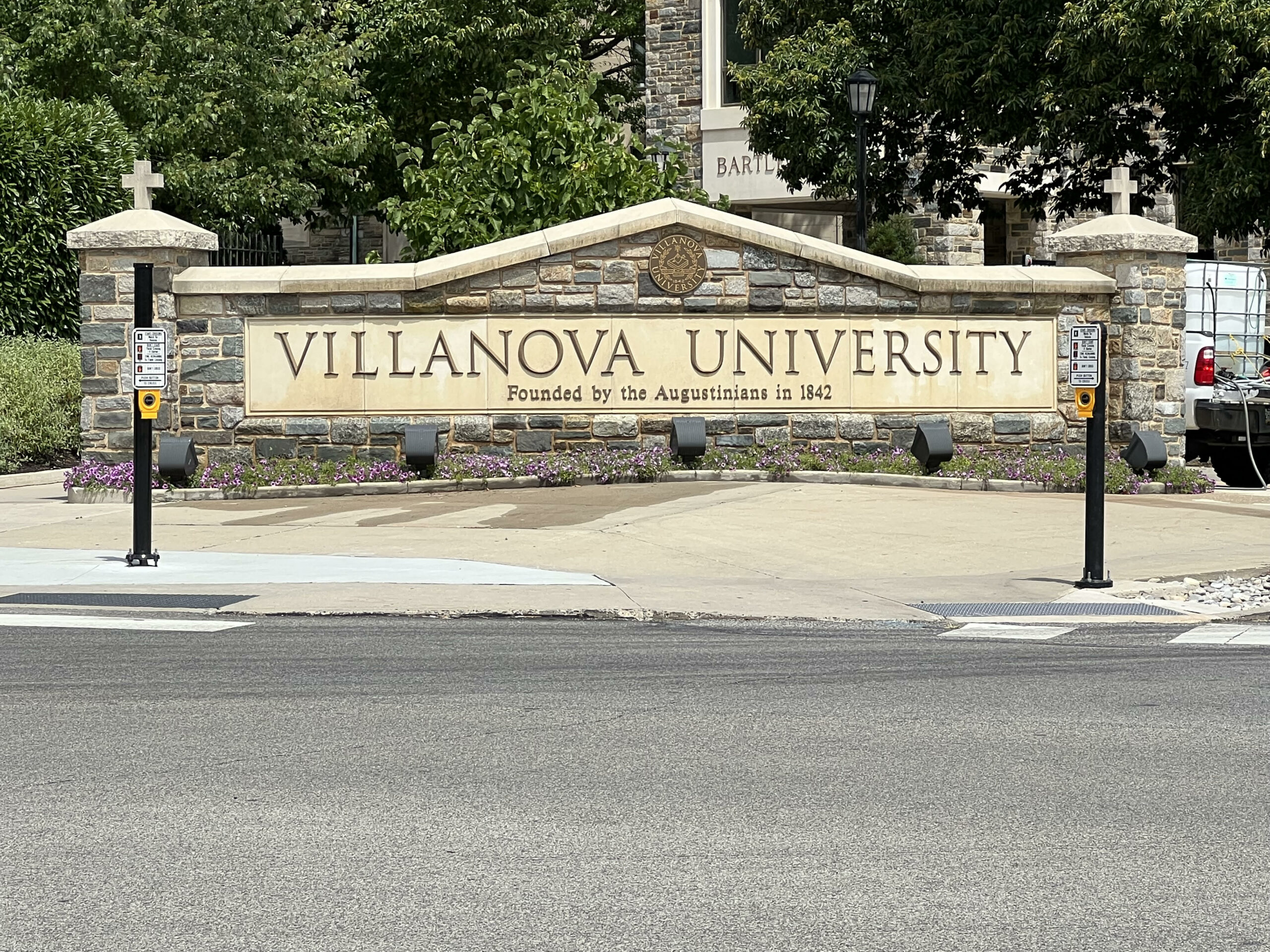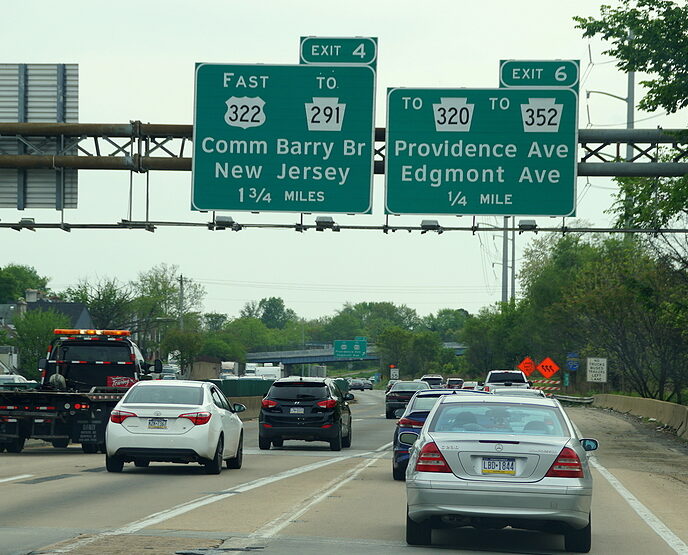Radnor Planners Reject New Villanova University Garage

The Radnor Township Planning Commission rejected a proposed new four-story tall parking garage on the Villanova University campus.
The new garage would replace a two-story garage, VU lawyer Nicholas Caniglia told the Planning Commissioners on Feb. 6. The current steel and concrete structure, off Ithan Avenue, is nearing the end of its useful life and sports signs saying “Park at your own risk.”
The university will require zoning variances for the building’s 52.7-foot height and additional setbacks from the property boundaries to build the new garage. It would add 232 parking spaces, said Mary Lou Smith, VU assistant vice president for engineering and construction.

Current Villanova parking garage
Caniglia said the school requires additional parking to comply with the township code for other possible projects in its long-term plan. VU Assistant Vice President Chris Kovolski insisted that Villanova has no plans to increase its enrollment. Instead, he said more students want to live on campus, so more dorm rooms will likely be needed. Villanova has 6,700 undergraduates and 3,100 graduate and law students.
Planning Commission Chair M.J. Frumin noted that the university had just been before the commission in November with plans for a new library, which was approved.
“With all due respect, you’re planning to add dorms,” said Frumin. “That, to me, screams more people.”
Frumin told the VU officials he thinks they will have “a challenging time” proving a hardship needed for a zoning variance.
Resident Sara Pilling was concerned about traffic in the area, particularly the narrow SEPTA underpass on Ithan Avenue, where only one car at a time can pass.
“It’s dicey at the very best of times,” said Pilling. “I have a deep concern. If they build 232 parking spaces, what is going to happen to that pinch-point?”
Ward 7 Commissioner Sean Farhy is concerned about the height of the proposed garage and also light pollution.
“It’s going to be too close for comfort (to residential neighborhoods),” he said. He suggested adding a parking deck underground to reduce the building’s height, but Smith told him that there were too many utilities.
Roberta Winters, another resident, said, “What happens at Villanova does not stay in Villanova. It impacts the greater Township. Among Radnor’s most pervasive problems are traffic, parking, and stormwater. Replacing the existing parking garage with one that is 53 feet high and holds 405 vehicles may reduce a parking concern, but it is bound to impact traffic, congestion, and create potential environmental issues.”
Winters said, “The garage site is problematic because of its location. Ithan Avenue is already a busy thoroughfare between Lancaster and Montgomery avenues. The intersection with County Line Road at this spot is particularly hazardous.” She also mentioned the narrow SEPTA bridge, saying traffic studies should be done.
Winters said neighbors were told that no more parking would be needed with the approval of dorms and an entertainment center on the south side of Lancaster Avenue a few years ago.
“If the university can collaborate to find parking for the Pope’s last visit, they should be able to find spaces at off-peak hours from other existing commercial and institutional spaces in the area. In addition to creative scheduling, shuttles, and even car services are always an option,” she said.
Winters was also concerned about environmental issues, such as stormwater runoff.
“I fear Villanova is eating those who live here, the properties that we own, and the quality of life we value, one bite at a time. This is an opportunity for you to say, enough is enough,” she said.
Residents Tish Long and Rick Leonardi wrote to the planners expressing similar concerns. Leonardi also believes that some homeowners nearby who should have been notified of the university’s plans, were not.
“What we’re hearing is a tremendous amount of opposition from the public,” said Frumin.
The Radnor Zoning Hearing Board is scheduled to take up the VU parking garage appeal at its Feb. 16 meeting.
Please follow DVJournal on social media: Twitter@DVJournal or Facebook.com/DelawareValleyJournal



